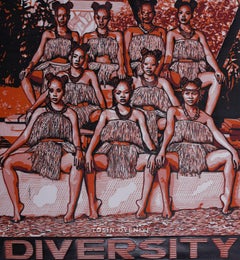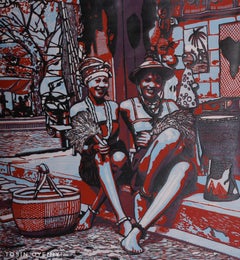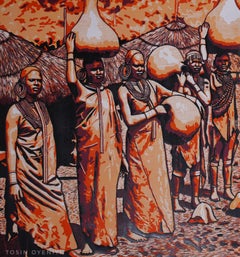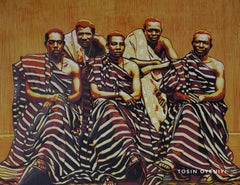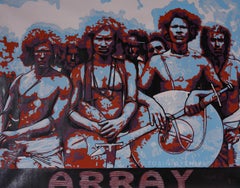Art by Medium: Ink
21st Century and Contemporary Old Masters Art by Medium: Ink
Linen, Canvas, Ink, Linocut
21st Century and Contemporary Old Masters Art by Medium: Ink
Linen, Canvas, Ink, Linocut
21st Century and Contemporary Old Masters Art by Medium: Ink
Linen, Canvas, Ink, Linocut
21st Century and Contemporary Old Masters Art by Medium: Ink
Linen, Canvas, Ink, Linocut
21st Century and Contemporary Old Masters Art by Medium: Ink
Linen, Canvas, Ink, Linocut
21st Century and Contemporary Old Masters Art by Medium: Ink
Linen, Canvas, Ink, Linocut
Early 1600s Old Masters Art by Medium: Ink
Ink, Pen
17th Century Old Masters Art by Medium: Ink
Ink, Pen
Early 20th Century Old Masters Art by Medium: Ink
Ink, Paper
2010s Old Masters Art by Medium: Ink
Paper, Ink
18th Century Old Masters Art by Medium: Ink
Watercolor, Ink, Archival Paper
16th Century Old Masters Art by Medium: Ink
Pen, Laid Paper, Ink
1740s Old Masters Art by Medium: Ink
Ink, Watercolor
1740s Old Masters Art by Medium: Ink
Ink, Watercolor
1740s Old Masters Art by Medium: Ink
Ink, Watercolor
15th Century and Earlier Old Masters Art by Medium: Ink
Ink, Vellum
16th Century Old Masters Art by Medium: Ink
Ink, Gouache, Pen
Mid-17th Century Old Masters Art by Medium: Ink
Ink, Watercolor, Vellum, Pencil
Mid-20th Century Old Masters Art by Medium: Ink
Ink, Laid Paper
1980s Old Masters Art by Medium: Ink
Ink, Mixed Media, Oil, Acrylic, Wood
Late 19th Century Old Masters Art by Medium: Ink
Ink, Paper
1840s Old Masters Art by Medium: Ink
Ink, Pen, Pencil, Carbon Pencil
18th Century Old Masters Art by Medium: Ink
Watercolor, Ink, Archival Paper
1980s Old Masters Art by Medium: Ink
Wood, Ink, Mixed Media, Oil, Acrylic
18th Century Old Masters Art by Medium: Ink
Watercolor, Ink, Archival Paper
18th Century Old Masters Art by Medium: Ink
Watercolor, Ink, Archival Paper
18th Century Old Masters Art by Medium: Ink
Ink, Archival Paper, Watercolor
18th Century Old Masters Art by Medium: Ink
Watercolor, Ink, Archival Paper
Mid-17th Century Old Masters Art by Medium: Ink
Ink, Watercolor
Late 17th Century Old Masters Art by Medium: Ink
Pen, Ink, Laid Paper
Early 17th Century Old Masters Art by Medium: Ink
Watercolor, Ink
18th Century Old Masters Art by Medium: Ink
Watercolor, Ink, Archival Paper
18th Century Old Masters Art by Medium: Ink
Watercolor, Ink, Archival Paper
18th Century Old Masters Art by Medium: Ink
Watercolor, Ink, Archival Paper
1770s Old Masters Art by Medium: Ink
Ink
18th Century Old Masters Art by Medium: Ink
Watercolor, Ink, Archival Paper
Late 18th Century Old Masters Art by Medium: Ink
Watercolor, Ink
1760s Old Masters Art by Medium: Ink
Ink
1780s Old Masters Art by Medium: Ink
Ink
19th Century Old Masters Art by Medium: Ink
India Ink, Paper
1660s Old Masters Art by Medium: Ink
Ink, Pen, Graphite
1850s Old Masters Art by Medium: Ink
Ink
1750s Old Masters Art by Medium: Ink
Chalk, Ink
Mid-18th Century Old Masters Art by Medium: Ink
Ink, Pencil, Laid Paper
17th Century Old Masters Art by Medium: Ink
Paper, Chalk, Ink, Pen
1740s Old Masters Art by Medium: Ink
Ink
1910s Old Masters Art by Medium: Ink
Paper, Carbon Pencil, Ink
1770s Old Masters Art by Medium: Ink
Carbon Pencil, Ink
16th Century Old Masters Art by Medium: Ink
Archival Ink, Rag Paper
16th Century Old Masters Art by Medium: Ink
Archival Ink, Rag Paper
2010s Old Masters Art by Medium: Ink
Emulsion, Ink, Sumi Ink, Watercolor, C Print, Color, Engraving, Other Me...
16th Century Old Masters Art by Medium: Ink
Metal
1650s Old Masters Art by Medium: Ink
Chalk, Ink, Laid Paper
16th Century Old Masters Art by Medium: Ink
Metal
16th Century Old Masters Art by Medium: Ink
Metal
16th Century Old Masters Art by Medium: Ink
Archival Ink, Rag Paper
17th Century Old Masters Art by Medium: Ink
Canvas, Pen, Gouache, Watercolor, Ink, Paper
Early 18th Century Old Masters Art by Medium: Ink
Ink
